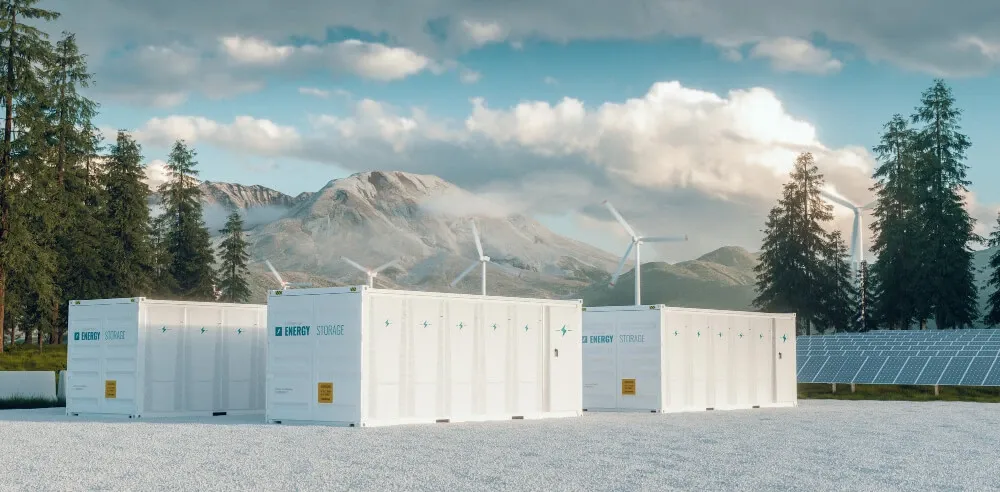Fueling the Future: The Role of Battery Energy Storage Systems
Empowering the energy transition: Explore the pivotal role of battery energy storage systems in driving a sustainable and resilient future.

Battery energy storage systems have become a key technology in the search for a reliable and efficient energy future. These systems are essential to the revolution in the production, storage, and distribution of electricity. We can address the erratic nature of renewable energy sources, improve grid stability, and advance a cleaner, more dependable energy ecosystem by utilising the power of batteries. This article explores the fascinating field of battery energy storage devices, examining its importance, usefulness, and influence on the development of our energy system.
Understanding Battery Energy Storage Systems
Systems for capturing, storing, and releasing electrical energy as needed are included in battery energy storage systems. These systems play a crucial role in ensuring the stability and dependability of the electrical grid, relieving the burden on traditional power plants, and encouraging the incorporation of renewable energy sources.
Typically, a battery energy storage system comprises of three essential parts.
Battery energy storage system typically consists of three key components
-
Battery Packs
These batteries come in several chemistries, each with special qualities including energy density, efficiency, cost, and lifespan. Due to its high energy density and advantageous performance traits, lithium-ion is the most popular battery chemistry utilised in BESS. -
Power Conversion Systems
Power conversion systems are used in battery energy storage systems to control the electrical energy flow between the battery packs and the grid. By converting the direct current (DC) stored in batteries into alternating current (AC), which is compatible with the electrical grid, these systems enable effective charging and discharging procedures. -
Control and Monitoring Systems
Complex control and monitoring systems are necessary for the BESS to operate at its best in terms of performance and safety. These systems control how quickly batteries charge and discharge, keep tabs on the batteries' temperature and charge level, and keep an eye on the general functionality of the energy storage system.
Advantages and Benefits
Battery energy storage systems offer numerous advantages and benefits, playing a pivotal role in the sustainable development of the energy infrastructure:
-
Grid Stability and Reliability
One of the primary benefits of BESS is their ability to address the intermittent nature of renewable energy sources. By storing excess electricity during periods of high renewable energy generation and releasing it during times of high demand or low generation, BESS help balance the grid, reducing fluctuations, and enhancing overall stability and reliability. -
Energy Time Shifting
Battery energy storage systems facilitate energy time shifting by capturing excess electricity during off-peak periods and releasing it during peak demand hours. This capability optimizes energy usage, alleviates stress on the grid during peak times, and lowers energy costs for consumers. -
Integration of Renewables
Renewable energy sources, like solar and wind, are reliant on the atmosphere and the length of daylight. By absorbing excess energy during periods of high generation and using it during periods of low generation or when demand exceeds supply, battery storage enables a larger penetration of renewable energy. -
Emergency Backup Power
Battery energy storage systems provide a reliable source of backup power during power outages or emergencies. Critical services, homes, and businesses can continue to operate smoothly even when the primary grid is disrupted.
Applications of Battery Energy Storage Systems
Battery energy storage systems find versatile applications across various sectors, transforming the energy landscape in the following ways:
-
Renewable Energy Integration
The seamless integration of intermittent renewable energy sources into the grid is one of the key applications of BESS. By storing surplus energy during periods of high generation, BESS reduces curtailment and maximizes the utilization of clean energy, ensuring a higher share of renewable energy in the overall energy mix. -
Peak Load Management
Systems for storing energy in batteries are essential for controlling peak loads, especially when there is a strong demand for electricity. BESS aids utilities in more effectively meeting peak needs by storing energy during times of low demand and supplying it during times of high demand, which eliminates the need for pricey and polluting fossil fuel-based power plants. -
Microgrids and Remote Areas
Battery storage enables the creation of independent microgrids, particularly in remote areas or during natural disasters. These microgrids enhance energy access, ensuring a reliable supply of clean power without relying solely on long-distance transmission lines. Battery energy storage systems provide resilience and stability to isolated communities and critical services during emergencies. -
Electric Vehicle Charging Infrastructure
Electric cars (EVs) are becoming more and more popular, which calls for effective charging infrastructure. By storing extra renewable energy during times of high generation and using it for charging during times of high demand, battery energy storage devices can play a significant role in assisting quick EV charging.
Future Outlook and Innovations
Because of ongoing developments and breakthroughs in the industry, the importance of battery energy storage systems in the energy transition is expected to grow even further. Researchers and business actors are actively attempting to increase energy storage capacity, improve battery performance, and lower costs. Many new battery technologies, including sodium-ion batteries, solid-state batteries, and next-generation chemistries, have the potential to increase the use of battery storage systems.
Conclusion
The integration of renewable energy, improved grid stability, and the advancement of a sustainable energy future are all made possible by battery energy storage systems, which are at the forefront of changing the energy landscape. BESS will keep playing a crucial role in igniting this future as the world works to lessen its reliance on fossil fuels and move to a cleaner energy ecology. Battery energy storage systems will contribute to a resilient, dependable, and environmentally conscious energy infrastructure through technological improvements and increased implementation, benefiting communities, industries, and the planet as a whole.
